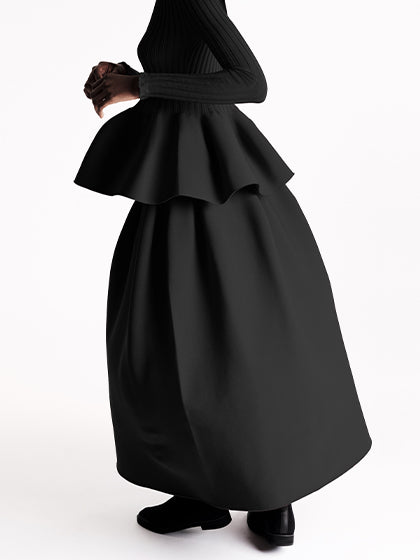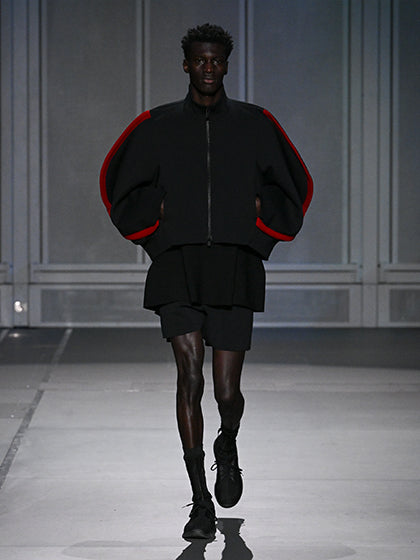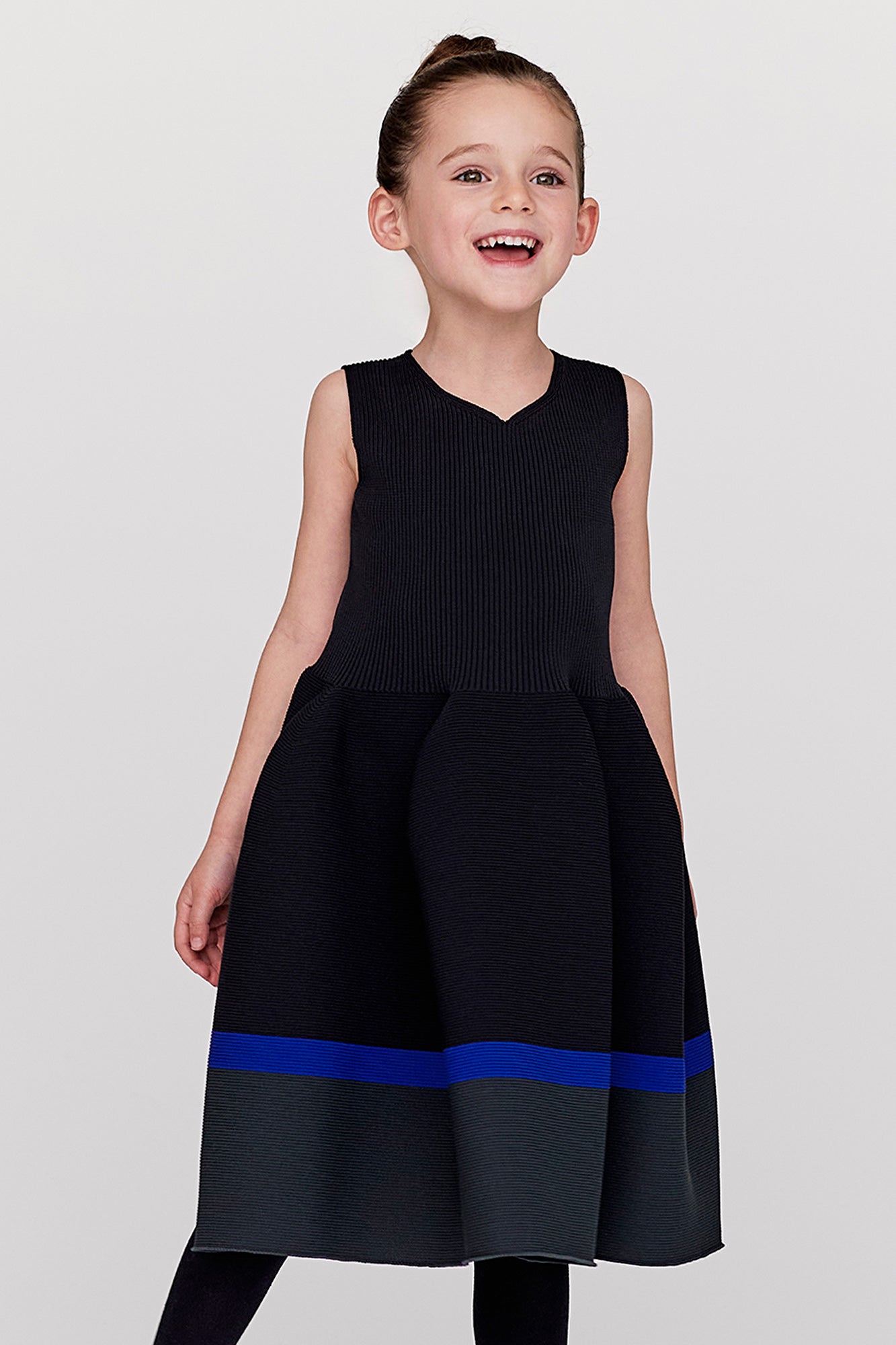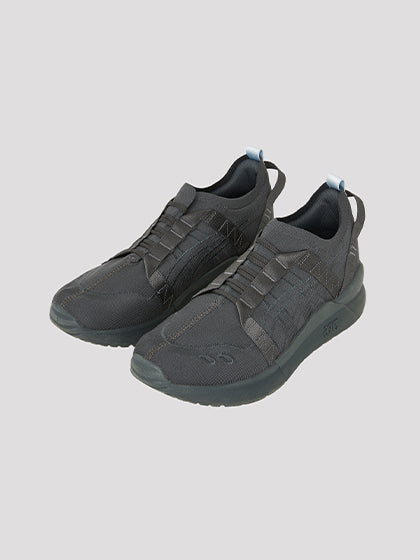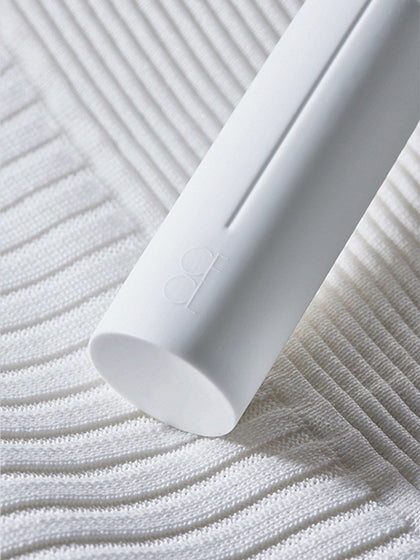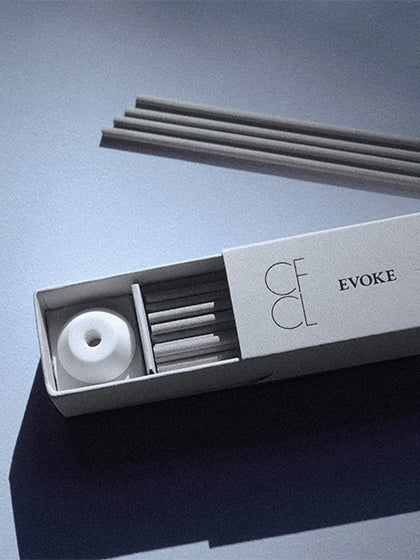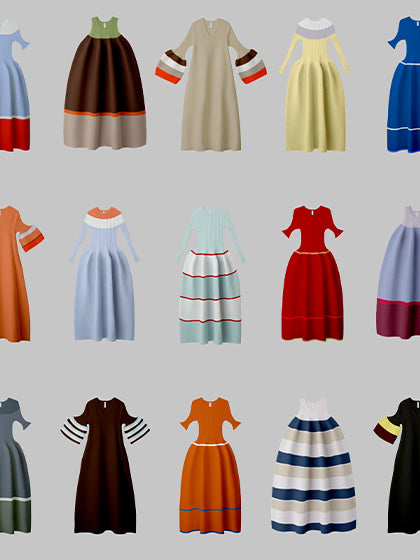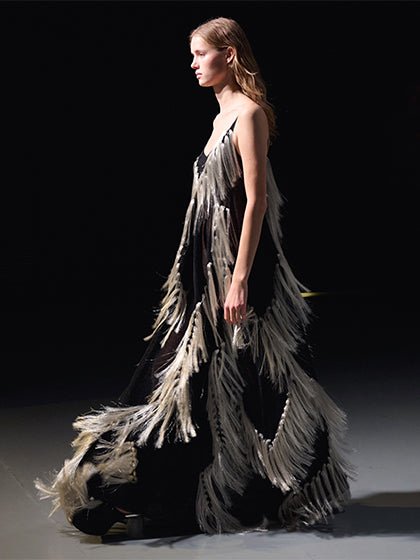
2024 was a year for us to reflect on “Consciousness,” one of the three pillars of CFCL’s philosophy which we have continued to pursue since the company’s founding. As we prepare for B Corp recertification scheduled for July 2025, we are exploring how we can contribute to our rapidly expanding network of stakeholders amidst significant business growth and how we can deliver value to society through fashion. 2025 also marks CFCL’s 5th anniversary since establishment. Reflecting on this milestone, we will accelerate our efforts to achieve company-wide goals – including reaching 100% usage of certified materials – while further advancing JEDI (Justice, Equity, Diversity, and Inclusion) initiatives across our workforce and supply chain. Through these initiatives, we aim to promote responsible business practices aligned with our goal of achieving carbon neutrality by 2030.
This report focuses on the following five areas:
1. Material Procurement
・Increasing the usage rate of certified materials that ensure responsibility for both the global environment and the labor conditions of producers
・Inquiry into Cotton-in-Conversion
2. LCA (Life Cycle Assessment)
・Verification results for garments made using acetate
・Verification results for garments made using mohair
3. Initiatives for CFCL Employees
・Workplace environment improvements
・Ongoing company-wide JEDI education
4. Creating Benefits in the Customer Domain
・Customer feedback and survey results
5. Creating Benefits in the Community Domain
・Disclosure of key partner knitwear production factories
Figure 1: Percentage of materials used in the VOL.8 Collection (*1)

*Fittings and accessories such as buttons, zippers, ties, waist elastic, etc. are not included in this total.
During the mass production of VOL.8, 81.42% of the materials used were certified by third-party organizations to ensure responsibility for the global environment and basic human rights (Figure 1). While we have been steadily increasing the proportion of certified materials over the years (Figure 2), we are increasingly facing the challenge of balancing creativity with sustainability.
In 2024, aiming for further growth as a brand, CFCL debuted its runway show at Paris Fashion Week, an event officially listed on the Fashion Week calendar. (While Paris Fashion Week includes a presentation format, primarily for emerging brands, runway shows are reserved for brands that have passed a selection process.) To meet the refinement and quality required on this grand stage, we expanded the variety of materials used in the collection, including the introduction of natural materials such as cashmere and silk to express elegant textures. We also advanced the use of materials like novelty yarns and lurex to create distinctive expressions. Many of these materials were non-certified, which resulted in a decrease in the overall percentage of certified materials used.
Through this process, we have recognized anew the following challenges:
・Limited options for certified materials in silk, animal fibers, and high-design composite materials; and
・an insufficient demand for certified materials in the apparel industry (resulting in limited supply)
These issues are critical for CFCL to address maintaining sustainable practices and the creative integrity of the brand. CFCL has set a goal to reach 100% certified material usage by 2030. To achieve this, we are actively encouraging material manufacturers to obtain certification for their products and replace virgin materials with recycled materials. Further, we will continue to develop highly creative design methods using available certified materials.
Figure 2: Percentage of certified materials used in the Fall/Winter season

II. Mislabeling and Returns Regarding Cotton-in-Conversion and CFCL’s related Initiatives
At CFCL, as part of our efforts to reduce environmental impact, we have actively adopted organic cotton, which is considered to have a lower environmental footprint compared to conventional cotton. However, it has recently come to our attention that some items sold in the VOL.8 Collection which were labeled as using organic cotton should have been labeled as “Cotton-in-Conversion.”
Upon investigation, we found that the mislabeling was due to insufficient information handling and communication within our suppliers, as well as a lack of thorough voluntary verification processes on CFCL’s part. We take this matter seriously and have implemented the following two improvements to enhance supply chain traceability and prevent future occurrences:
・strengthening communication with our suppliers and reinforcing voluntary re-verification processes by CFCL’s Production Management Department; and
・establishing an internal audit process for the Production Management Department by CFCL’s sustainability team.
We sincerely apologize for the inconvenience caused to customers who purchased the affected items. To address this, CFCL is offering returns for the affected products(CF008KC044, CF008KN133) upon customer request. For more details, please refer to the link below.
Cotton-in-Conversion
Traditional cotton cultivation requires large amounts of water, chemical fertilizers, and pesticides which are problematic for soil, the wider environment, and human health. In comparison, organic cotton is grown through more sustainable methods that reduce environmental impact by limiting the use of these chemicals and pesticides.
On the other hand, Cotton-in-Conversion refers to cotton grown using the same methods as organic cotton. However, this cotton has not yet completed the approximately three-year transition required for the soil to regenerate – a period necessary before official organic certification can be obtained (Figure 3).
Figure 3: Transition from Conventional Cotton to Organic Cotton

This cotton cannot obtain organic certification and is internationally labeled as “Cotton-in-Conversion” (which can be defined as cotton in transition to organic) or simply “Cotton,” rather than “Organic Cotton.” As a result, it is typically traded at the same price level as conventional cotton. This situation creates a challenge for farmers, as they practice organic farming methods, but can only sell their cotton at conventional cotton prices, leading to income instability. This is one of the factors hindering the wider adoption of organic cotton.
To address this global issue, CFCL has partnered with STYLEM TAKISADA-OSAKA CO., LTD. (hereinafter, STYLEM) to promote the organic transition of farmland currently used for conventional cotton cultivation. STYLEM provides organic cotton seeds free of charge to farmers in specific regions of India and dispatches experts to share knowledge on cultivation methods. Additionally, STYLEM purchases Cotton-in-Conversion at price levels equivalent to organic cotton, supporting farmers in their transition to organic cultivation. As well as actively incorporating Cotton-in-Conversion into its products, CFCL has also begun exploring new initiatives aimed at providing more direct support to organic cotton farmers.
The material in question passed through three separate domestic textile trading companies, from cotton procurement to the development of CFCL’s original yarn. The insufficient information management and communication that led to the incorrect labeling occurred through the blending process of recycled polyester yarn and Cotton-in-Conversion yarn, and the subsequent process of converting it into yarn for knit manufacturing. Additionally, CFCL did not have a sufficient process for verifying material certification credentials before the start of mass production.
Through these initiatives, CFCL aims to further enhance supply chain transparency, improve the accuracy of Life Cycle Assessment (LCA) calculations, and continue sustainably reducing environmental impact. Progress in this domain will be reported on regularly in future Consciousness Reports.

Since its founding, CFCL has been committed to achieving carbon neutrality by 2030, while aiming to complete the Life Cycle Assessment (LCA) for all products by the end of fiscal year 2025. From the offset, CFCL has consistently worked towards reducing environmental impact, building on the cooperation of its suppliers while continuously refining its approach to material selection and production processes. We are constantly updating our material selection and manufacturing processes, including garments in which we have already switched materials, those for which we are planning to switch, and those in the prototype stage.
In VOL.8, CFCL unveiled its first runway show since participating in Paris Fashion Week. In this challenging process, which emphasized sophisticated design and high quality, a wide range of composite and new materials were utilized. Although it was difficult to increase the number of items for which LCA calculations were completed, CFCL successfully achieved 130 out of 203 items (64%), which is 5% more than the previous collection.
This report highlights two specific initiatives:
I. LCA Calculation for Garments Made using Acetate
II. LCA Calculation for Garments Made using Mohair
I. LCA Calculation for Garments Made using Acetate

CFCL introduced acetate as a material for the first time in its VOL.8 Collection (Fall/Winter 2024). This collection features the new MILAN RIB series, which combines recycled polyester and virgin nylon.
Generic acetate is a type of man-made cellulose fiber derived from natural cellulose found in wood pulp, chemically treated with acetic acid. For this collection, we used Eastman’s “Naia™ Renew”, an acetate-based fiber with high supply chain transparency. This material choice is important not only for achieving luxurious and sophisticated creations but also for ensuring environmental and social responsibility.
Naia™ Renew is made using acetate derived from sustainably sourced wood pulp and certified recycled waste, and it possesses the characteristics shown in Figure 4 below.
Figure 4 Characteristics of Naia™ Renew (*2)

These efforts have resulted in a highly transparent production system that minimizes environmental impact and takes workers’ health into consideration.
Furthermore, through our ongoing discussions with Eastman, we were able to directly obtain actual data for the upstream stages of acetate production, specifically regarding raw material sourcing for the first time in our LCA. The results of the calculation are shown in Figure 5.
Figure 5: Greenhouse Gas Emissions Figure for Garments Made using Acetate

*This product’s composition consists of 63% acetate, 28% recycled polyester, and 9% virgin nylon.
Based on our LCA verification and the aforementioned characteristics of Naia™ Renew, it is evident that this material has a low relative environmental impact, including reduced greenhouse gas emissions.
On the other hand, one of CFCL’s challenges is eliminating virgin materials such as nylon, which is also used in this product. As noted in previous reports, nylon, as a virgin petroleum-based material, has high greenhouse gas emissions. For example, if the dress illustrated above (9.68 kg-CO2e/1pc) were entirely made of nylon, its greenhouse gas emissions would increase to 13.52 kg-CO2e/1pc.
While the proportion of nylon in this product is small, we are working closely with our suppliers to develop prototypes using recycled alternatives to replace it. Progress on this initiative will be reported in future Consciousness Reports.
II. LCA Calculation for Garments Made using Mohair

For the first time, we have conducted an LCA assessment on a composite yarn made from mohair, which we have used in our Fall/Winter collections every year since VOL.4. This composite yarn consists of three materials: mohair, wool, and virgin nylon. It is a decorative yarn—specifically, a type of loop yarn known as tam yarn—which undergoes a finishing process where the loops are cut to create a soft, raised texture, resulting in a refined and luxurious feel.
Mohair is a natural fiber sourced from the fleece of the Angora goat, known for its silk-like luster and soft texture. For this collection, we use kid mohair, which is obtained from Angora goats younger than one year old.
Mohair is an exceptionally rare natural fiber, accounting for only about 0.004% of the world’s total fiber production. By comparison, wool makes up approximately 0.9%. (*3)
Figure 6: Percentage of Global fiber production by type

In this collection, we have 10 product styles made with mohair, accounting for 2.6% of the total material usage.
While we conducted surveys with each supplier to calculate the raw material procurement segment, we were unable to obtain the necessary data during this investigation. Additionally, when exploring the use of the LCI (Life Cycle Inventory) (*4) database, we encountered challenges due to the limited circulation of mohair, making it equally difficult to acquire relevant data. Given these constraints, we substituted the LCI database values for wool—another animal-based fiber with similar characteristics—to complete our calculations, resulting in the findings shown in Figure 7.
Figure 7: LCA Calculation for Garments Made using Mohair

*The composition of the above products being: 55% mohair, 15% wool, 30% virgin nylon.
When comparing the greenhouse gas emissions of mohair, wool, and virgin nylon, we found that the emissions from animal-based fibers, mohair and wool, were significantly higher than those of virgin nylon.
In our VOL.6 report, we highlighted that raw material procurement—specifically animal grazing, rearing, and raw wool harvesting—accounts for approximately 77% of total emissions, making it the most significant contributor (Figure 8). Furthermore, as mentioned earlier, the raw material procurement supply chain is highly complex, and these opaque processes account for the majority of greenhouse emissions.
Figure 8: Greenhouse Gas Emissions for Select Mohair Garments:
Distribution Across All Processes from Raw Material Manufacturing to Knitting, Customer Use, and Disposal

Through the LCA verification process, we identified two major challenges:
The first challenge relates to raw material procurement, where the process lacks sufficient transparency to complete the LCA (Life Cycle Assessment). The second challenge concerns animal welfare, as we cannot directly verify the conditions of the workers, and well-being of the animals.
Therefore, starting from VOL.10, we will transition to RMS (*5) and RWS (*6) certified materials, sourced from ethically managed farms. We will continue to report on our progress in future Consciousness Reports.
CFCL is actively expanding its business overseas and aims to become a world-class global company. To achieve this, we believe that promoting JEDI (Justice, Equity, Diversity, and Inclusion) within the company is essential, not only for maintaining employee performance and improving wellness, but also for attracting talented individuals from all over the world. We do not view our commitment to JEDI as merely an option or obligation, but rather as a creator of intrinsic value for CFCL.
At CFCL, we believe that, just as each individual has unique ways of thinking and body types, the diversity of backgrounds, perspectives, and experiences among our employees drives innovation and success. We are actively working to recruit staff from diverse backgrounds, as reflected in the current composition of our workforce below.
Figure 9: Composition of Our Workforce

*. Further details on our hiring policy are visible on our Corporate page.
*. The average percentage of female staff in the apparel industry in Japan is 75%, while the proportion of females in managerial positions is 27%. The average percentage of females in managerial roles across all industries in Japan has just surpassed 10%.
In the previous VOL.7 report, we shared our intention to implement JEDI training for all employees, in order to build mutual understanding of JEDI issues before implementing new policy. During the review of our JEDI initiatives as part of the B Corp re-certification process, we recognized that there is still much for us to learn, and we concluded that deepening our understanding of JEDI is our priority in this domain.
From October to November 2024, the sustainability team held 16 workshops for all employees (including office, store and in-house factory), utilizing the B Corp-developed JEDI board game “Let’s Play Equal.” This game is designed as a management tool for teambuilding and fostering understanding of Diversity & Inclusion. The game facilitated company-wide conversations on JEDI, both in a broader global context and in the context of our workplace. After the game, we gathered reflections, feedback, and ideas from staff on JEDI at CFCL. Through this process, the following became evident:
・Insufficient common understanding and engagement with JEDI topics among company members. 46% of staff reported only a partial understanding of the themes brought up in the game, while only 52% responded to the company-wide JEDI survey; and
・the most common feedback in the survey was a request for additional educational opportunities, such as workshops, seminars, and JEDI training for management.
Based on these results, CFCL will focus on improving workplace processes in the short-term (Figure 10), and concentrate on JEDI education in the medium term (Figure 11). In Phase 1, we will work on four immediate workplace improvements based directly on feedback from staff.
Figure 10

The themes of JEDI are complex and multifaceted, and in many cases, not widely discussed in Japan. At CFCL, we recognize the necessity of providing comprehensive and continuous learning opportunities for employees to deepen their fundamental understanding between staff and managers, and to establish meaningful policies based on that understanding. Accordingly, in Phase 2, we will drive the following four JEDI educational processes:
Figure 11

Simultaneously, CFCL is reviewing existing policies and preparing new initiatives based on feedback and employee ideas from the first workshop. These include measures that can be integrated into current policies and initiatives that can be implemented immediately. As the first step, we will begin updating the onboarding process for new employees.
Additionally, CFCL is promoting communication in English in the workplace. In April 2025, we plan to transition the primary business language from Japanese to English. This initiative will lay the foundation for welcoming diverse talent from around the world, and is an important step in creating a more inclusive workplace environment.
In 2025, CFCL will continue to prioritize JEDI education as a key focus. We will continue to review internal policies while addressing areas for improvement. We intend to report this progress in future Consciousness Reports.
CFCL views our customers not merely as purchasers of products, but as important stakeholders with whom we create social and environmental value. Feedback from customers who interact with our products in CFCL’s direct-operated stores, online store, or with our retail partners (such as department stores and select shops) is an invaluable opportunity for us.
We regularly check customer feedback and surveys to ensure that we are delivering value in alignment with CFCL’s philosophy and policies. By reflecting this feedback in our creations and management, we are also able to promote the delivery of better products and value to both our customers and society.
Implementation Overview:
・Survey Period: July 26, 2024 (Fri) 18:00 – August 1, 2024 (Thu) 18:00
・Distribution Method: Email Newsletter (Sent on July 26, 2024, Fri 18:00)
Key Findings:
CFCL’s products are recognized and purchased by a wide range of age groups (from 20s to 70s) across genders. Among the respondents, more than one-third of customers had purchased six or more items, indicating strong support for the brand. The survey made clear that our products are worn by respondents not only for everyday use but also for work, business events, formal occasions, and a variety of other settings.
In the category-based satisfaction feedback, we received generally high satisfaction ratings. Customers expressed high satisfaction with CFCL’s philosophy, easy care, sustainability, quality, and durability. However, areas for improvement were identified in the balance between price and value, product variety, and size offerings.
Figure 12
Implementation of Customer Satisfaction Survey

Based on customer feedback, we identified several key areas to address moving forward: improving the user experience (UX) of our online store, enhancing product descriptions; expanding size offerings; strengthening omnichannel capabilities; increasing the number of items; improving in-store communication; and expanding distribution channels.
In future customer surveys, we plan to expand on questions related to sustainability efforts, focusing on customer awareness of CFCL’s sustainability actions, as well as their impact on purchasing intent, frequency of use, and product ownership duration. Progress will be shared in upcoming Consciousness Reports.
Since its founding, CFCL has remained committed to producing products that are made in Japan (with the exception of some collaboration items). While high quality is always a priority, our emphasis on local community production is driven by the following key reasons:
1.achieving a transparent supply chain
2.contributing to knit-producing communities and revitalizing regional economies
Through these processes, we aim to contribute to the sustainability of knit-producing regions and their ability to pass this legacy onto the next generation.
As a concrete example of our efforts related to the Point 2., we have publicly disclosed information about our major knit production factories below and on the CORPORATE INFORMATION page. (*7)
Major knit factories are defined as those that have been a production partner for over a year, with regular communication including factory visits.
Figure 13. CFCL’s Major Knit Production Factories

Knit production factories are one of CFCL’s important communities. We aim to build a ‘co-existence and co-prosperity’ relationship with each factory through growing together, sharing profit and building a sustainable future for the local knit industry. The purpose of disclosing information about each factory is twofold:
1.Contributing to the expansion of employment opportunities in knit-producing regions.
A major challenge facing Japan’s textile industry is the severe employment issue caused by rural population decline, the aging workforce, and a lack of successors for businesses. Through this initiative, CFCL hopes to create opportunities for factories to bring in new talent.
2.Improving the reputation of knit production factories and contributing to business expansion. We aim to support the creation of new business opportunities by widely communicating the value of factories that specializing in high-quality manufacturing. We hope this will contribute to the development of these businesses.
The supply-chain information disclosed at this time pertains solely to knit production factories. Moving forward, we plan to extend transparency across the entire supply chain, from raw materials to fabric manufacturing and processing, in order to realize a truly high transparency supply chain in the future.
If any CFCL director, officer, or employee discovers something that they believe violates CFCL’s policies or contravenes the law, they can contact the following inquiry office at any time:
Inquiry Contact: Attorney Junya Komatsu (Mimura Komatsu Law Firm)
Email: komatsu.junya@mktlaw.jp
CFCL’s latest policies are listed here.
*1. Global Recycled Standard (GRS) is an international product standard that establishes third-party certification requirements for: recycled content; processing and distribution process management; social and environmental practices; and chemical regulations.
The Global Organic Textile Standard (GOTS) is a global standard set by leading international standards organizations to ensure that textile products are “rightly organic” from raw material harvesting, to environmentally friendly and socially responsible manufacturing and labeling that provides consumers with a credible guarantee.
OCS (Organic Content Standard) certification is an international standard that verifies the organic material content in a product through third-party certification. It ensures the traceability and reliability of organic materials from raw materials to the final product.
Recycled Claims Standard Certification (RCS) is an international certification that assesses whether or not a final product contains at least 5% recycled materials in its raw materials.
*2. FSC (Forest Stewardship Council) certification guarantees that products use forest-derived materials from well-managed forests or other low-risk sources in a way that benefits the environment, society, and economy.
PEFC™ (Programme for the Endorsement of Forest Certification) is an international certification system that promotes sustainable forest resource use and considers environmental, social, and economic balance in forest management.
*3. Textile exchange (Reference)
*4. A Life Cycle Inventory (LCI) database is a specialized repository that contains detailed data about the inputs and outputs associated with the production, use, and disposal of various products and materials. For LCA calculations, CFCL mainly uses IDEA, a database jointly developed by the National Institute of Advanced Industrial Science and Technology and the Japan Environmental Management Association for Industry.
*5. Responsible Mohair Standard (RMS) Certification is an international voluntary standard established by Textile Exchange, a global non-profit organization that promotes positive climate action across the fashion, textile, and apparel industries. The standard defines the chain of custody for tracking Angora goats from certified farms to the final product.
*6. Responsible Wool Standard (RWS) Certification, similar to the RMS certification, is an international voluntary standard established by Textile Exchange. It sets the chain of custody requirements for tracking wool from certified farms to the final product.




